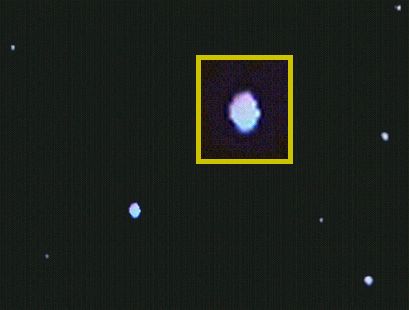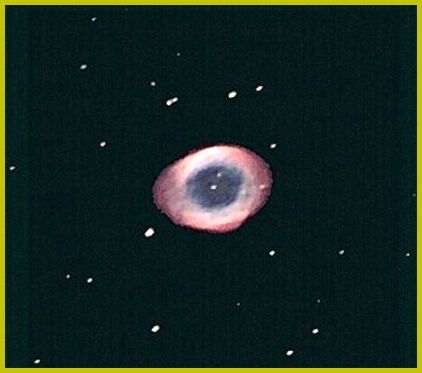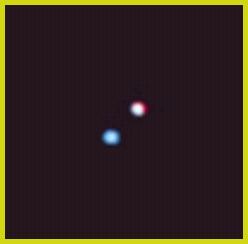Last updated: 27 September 2005
|
|
Last updated: 27 September 2005 |
Some LXD55 users have sent me examples of their astrophotography. If you have some examples you would like included here please send me a description of how you made the astrophotos and a copy of the images as GIF or JPEG files (due to internet email gateway issues, please send only one image file per message or ZIP or Stuff multiple files). Send to mweasner@optcorp.com. Alternatively, if you have created your own web page with your examples please let me know and I'll include a link to your site.
| Submitted by: Dieter.Wolf@DNSint.com [27 Sep 05] |
|---|
|
please find attached last nights planetary - NGC6572.
This PN in Ophiuchus is extremely small (just about 10 arcsec in diameter), bright (about 8m.5) and colorfull (blueish-green). To me it looks like a tiny, blue M57, but even in the enlarged inset without noticeable details. I simply trusted my 'GOTO' - in the 24.5mm SWA ocular I thought to see only a blueish star. 2005-09-22, 22:00 CEST, LXD55 SN-10 with ToUCam SC1 at prime focus, 10x5s exposures cs and thank you for posting |

|
| Submitted by: Dieter.Wolf@DNSint.com [14 Sep 05] |
|
the weather in Southern Germany is beautiful at the moment so there is not
much time left for sleeping during the night...
M57 - The Ring Nebula 2005-09-05, 23:30 CEST, LXD55 SN-10 with ToUCam SC1 at prime focus, 70x16s exposures This planetary nebula - one of my 'All Stars Favorite' in summer skies and may be one of the most photographed - is a very esthetic, beautiful view. While it looks pale-greenish, nearly round and without the central star in the ocular, its elongated size of 80x60arcsec only appears in photographs. A UHC filter worked fine for me visually, but I disliked the 'blue-only' photographic color, so I did not use it. With about 9m brightness you can see rainbow colors from red-orange Hydrogen and Nitrogen in the outer parts of the ring to green-blue Oxygen and Helium inside the ring as well as the about 15m bright, planet-sized but 100.000K hot white dwarf in the center and structure in the ionized gas. Have a look at the weak red fringes on the outer side of the ring and if you're looking precisely you even can glimpse two 'blue lanes' inside the ring, which are 'real' - see professional photos. What happened to this star about 7000 years ago will probably happen to our sun in far far future too. Think I should stop now going into raptures... |

|
| a little bit of color and many stars...done with LXD55 SN-10 and ToUCam SC1 at prime focus. You woun't see much colors in the night skies, not at all from within a city; most things are shades of grey. Not Albireo, beta Cygni, the double with beautiful color contrast (3m-5m, 35arcsec), 50x half a second exposed. |

|
| Or the rich open cluster M11 in Scutum (500 stars brighter than 14m), most white-blueish but some remarkable yellow-red giants, 30x 8s exposures. Don't ask me why it's called 'Wild Duck Cluster'... |

|
|
White stars again in M2, the bright (6m.5) and not really 'round' globular
cluster in Aquarius with about 150.000 stars of 13m and below, 17x 9s
exposures.
I love these night sky views... Thanks for posting, Mike and clear skies to all of you stargazers, Dieter (Munich, Germany) |

|
Go to the July-August 2005 Guest Deepsky Astrophotography Page.
Go to the April-June 2005 Guest Deepsky Astrophotography Page.
Go to the January-March 2005 Guest Deepsky Astrophotography Page.
Go to the August-October 2004 Guest Deepsky Astrophotography Page.
Go to the March-May 2004 Guest Deepsky Astrophotography Page.
Go to the 2003 Guest Deepsky Astrophotography Page.
Go to back to my LXD55 Home Page.